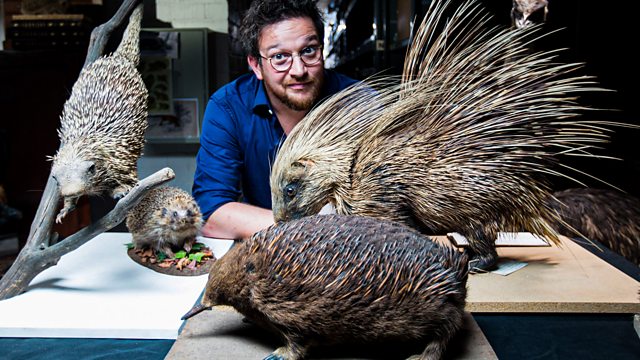Secrets of Skin episode 1 – Adaptability: Skin is an incredible, multi-function organ that science is still learning so much about. It has adapted to allow animals to conquer virtually every habitat on the planet.
In this episode, Professor Ben Garrod reveals some ground-breaking new science and amazing, specialist, factual insight as he discovers how human skin is an ecosystem in its own right, playing host to demodex mites, that might redefine our understanding of human ancestry. He explores the new science that could pave the way for re-engineering human skin on amputations to make it more robust. And he reveals how keratin, a protein that is a key component of skin and that makes up our hair and nails, has been taken to the extreme by some animals including pangolins and horses.
Skin is the body’s largest organ and all vertebrates share the same basic blue print. Adaptations in the three main layers, the epidermis, the dermis and the subcutaneous fat layers have allowed vertebrates to thrive in virtually every habitat on earth.
Secrets of Skin episode 1 – Adaptability
Skin is the layer of usually soft, flexible outer tissue covering the body of a vertebrate animal, with three main functions: protection, regulation, and sensation. Other animal coverings, such as the arthropod exoskeleton, have different developmental origin, structure and chemical composition. The adjective cutaneous means “of the skin” (from Latin cutis ‘skin’). In mammals, the skin is an organ of the integumentary system made up of multiple layers of ectodermal tissue and guards the underlying muscles, bones, ligaments, and internal organs.
Skin of a different nature exists in amphibians, reptiles, and birds. Skin (including cutaneous and subcutaneous tissues) plays crucial roles in formation, structure, and function of extraskeletal apparatus such as horns of bovids (e.g., cattle) and rhinos, cervids’ antlers, giraffids’ ossicones, armadillos’ osteoderm, and os penis/os clitoris.
All mammals have some hair on their skin, even marine mammals like whales, dolphins, and porpoises that appear to be hairless. The skin interfaces with the environment and is the first line of defense from external factors. For example, the skin plays a key role in protecting the body against pathogens and excessive water loss. Its other functions are insulation, temperature regulation, sensation, and the production of vitamin D folates. Severely damaged skin may heal by forming scar tissue. This is sometimes discoloured and depigmented. The thickness of skin also varies from location to location on an organism. In humans, for example, the skin located under the eyes and around the eyelids is the thinnest skin on the body at 0.5 mm thick and is one of the first areas to show signs of aging such as “crows feet” and wrinkles. The skin on the palms and the soles of the feet is the thickest skin on the body as 4 mm thick. The speed and quality of wound healing in skin is promoted by the reception of estrogen.




